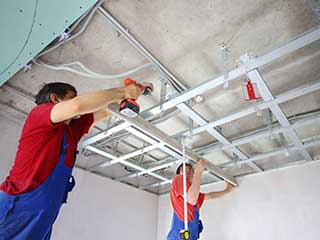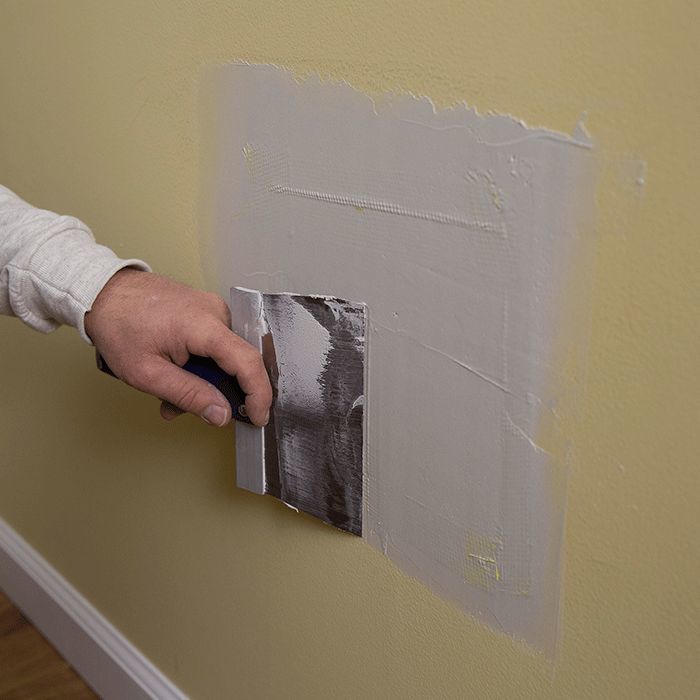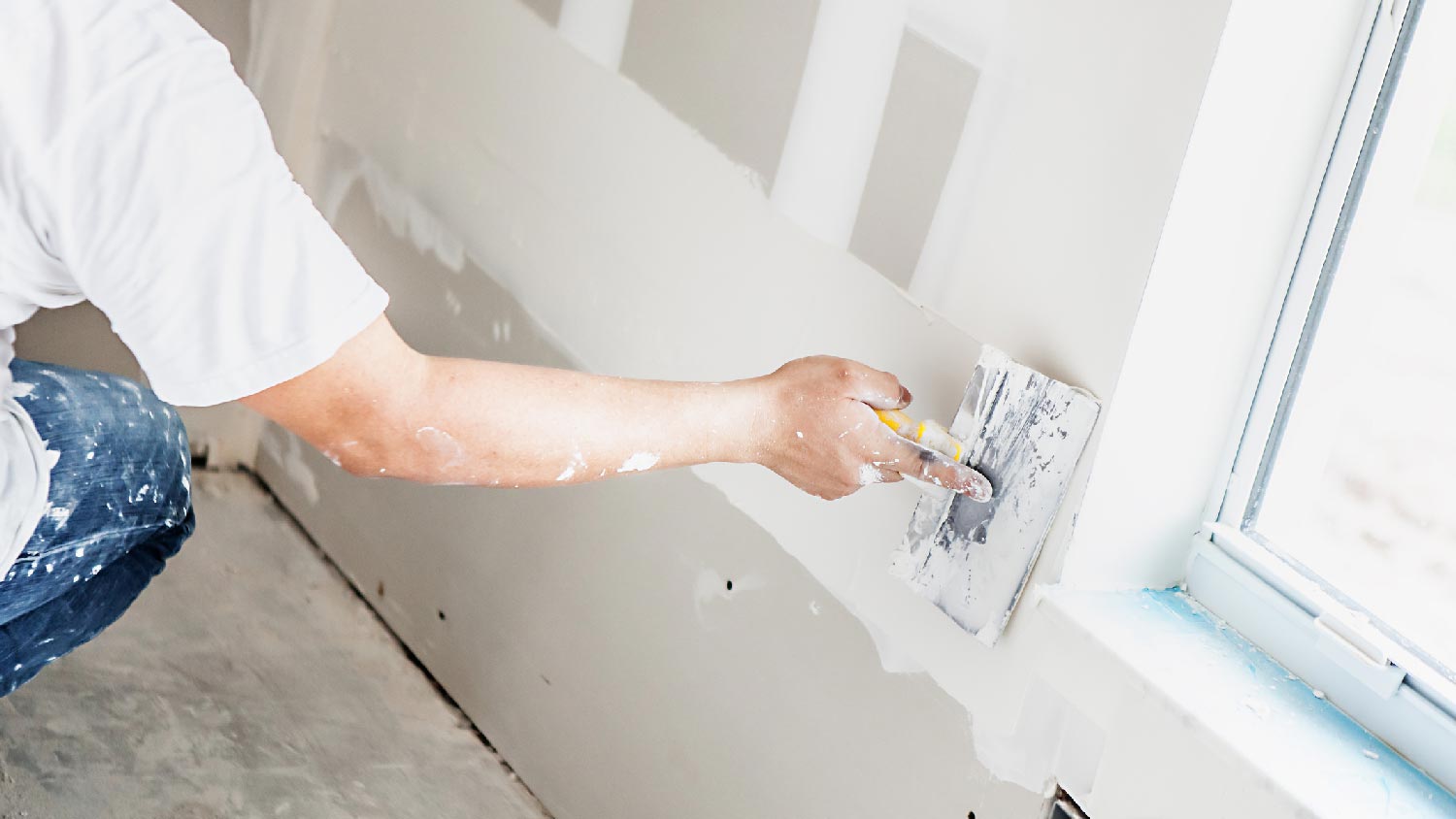Experience flawless results by working with highly rated drywall contractors and painters in your area.
Step-by-Step Approaches to Achieving Flawless Drywall Repair Service and Installment
Attaining remarkable drywall repair and setup needs a methodical strategy. It entails understanding the different sorts of drywall and the tools required for the job. Appropriate location preparation is crucial prior to beginning any kind of job. Drywall Repair Ogden UT. Each step, from patching holes to setting up brand-new sheets, needs interest to information. The procedure does not end with setup; finishing techniques are crucial for a refined look. The following actions will assure a seamless outcome, but what specifically do they require?
Understanding Drywall Types and Equipment Needed

The installation tools are similarly crucial. An energy knife is important for cutting drywall sheets, while a drywall saw can help in making exact cuts for fixtures or outlets. T-squares ensure precise dimensions, and drywall screws or nails safeguard the panels to wall surface studs. Furthermore, a drywall lift can assist in the installment of huge sheets, minimizing physical strain. Familiarity with these tools and kinds substantially adds to the performance and quality of drywall projects.
Preparing the Area for Repair or Setup
Preparing the area for drywall repair work or setup is vital to guarantee a efficient and smooth process. The surrounding area should be cleared of furniture and various other barriers to give enough functioning space. This not only guarantees safety and security however also prevents damages to belongings. Next off, it is vital to cover the floor with ground cloth to capture any type of debris or dust produced throughout the work.
Additionally, the wall surfaces must be examined for any type of loosened paint or wallpaper that may disrupt attachment. Eliminating these elements develops a tidy surface area for the brand-new drywall. Prior to beginning, it is recommended to shut off power to electric outlets or fixtures in the location. Making sure ample lights in the work area will certainly additionally enhance presence and focus throughout the repair service or installation procedure. drywall contractors. By thoroughly preparing the area, one lays the foundation for a successful drywall task
Step-by-Step Process for Patching Holes

Covering openings in drywall calls for an organized strategy to assure a seamless repair service. The initial step includes examining the dimension of the opening. For tiny openings, a patching substance might be sufficient, while bigger openings require a spot. Next off, the broken location needs to be cleansed and prepared by getting rid of any kind of loosened particles.
For little openings, using spackling compound with a putty knife is suggested, smoothing it over the hole and feathering the edges. When completely dry, fining sand the area assures a smooth finish. For larger holes, a drywall patch must be reduced to size, positioned over the opening, and protected with screws. After mounting the spot, the same spackling process is repeated, followed by sanding.
Ultimately, the patched area needs to be primed and repainted to match the bordering wall surface. This thorough process assures a professional appearance and prolongs the lifespan of the fixing.
Setting Up New Drywall Sheets: A Comprehensive Overview
Mounting new drywall sheets requires mindful preparation and execution to assure a sturdy and visually enticing surface. First, the location should be determined accurately to establish the variety of sheets required. It is essential to pick the best thickness, typically 1/2-inch for indoor wall surfaces and 5/8-inch for ceilings or fire-rated applications.
Next, the studs or structure must be evaluated for any irregularities, ensuring they are lined up and correctly spaced. When putting the drywall sheets, they need to be placed horizontally to reduce joints and improve structural stability. A drywall lift can be beneficial for overhanging installations.
Fastening the sheets with drywall screws at ideal periods makes sure a safe and secure installation. It is necessary to countersink the screws a little below the surface area to prepare for the ending up procedure. Following these guidelines will lead to a solid structure, prepared for the following action in drywall finishing.
Completing Touches: Insulation, Mudding, and Fining Sand Methods
When the drywall sheets are firmly secured, the emphasis moves to the finishing touches that will supply a refined appearance. This process starts with taping, making use of either paper or fiberglass mesh tape to cover the seams between sheets. The tape guarantees a smooth change, reducing the risk of breaking. Adhering to insulation, mudding is important; a joint substance is used over the tape to load voids and create a seamless surface area. Commonly, multiple layers are required, every one feathered out additionally than the before minimize visibility.
After adequate drying time, fining sand is the last action in achieving a flawless surface. A fine-grit sandpaper is made use of to smooth the dried compound, ensuring there are no bumps or flaws. Interest to information during this phase is significant, as it you could try this out considerably affects the overall look of the wall surface. The end outcome need to be an even, professional-looking surface area prepared for priming and painting.
Often Asked Concerns
Exactly how Do I Choose the Right Drywall Thickness for My Job?
To select the ideal drywall thickness, take into consideration the project's purpose, place, and structural requirements. Criterion thicknesses include 1/2-inch for general usage and 5/8-inch for fire-rated applications, making sure resilience and conformity with building codes.

Can I Install Drywall Over Existing Drywall?
Yes, setting up drywall over existing drywall is feasible. It is important to ensure the underlying surface is cost-free visit and secure from damage. Proper fastening and factor to consider of density are imperative for a successful installation.
What Are the most effective Practices for Drywall Disposal?
The most effective methods for drywall disposal include recycling when possible, utilizing local waste management solutions, and following standards for unsafe products if relevant. drywall contractor. Properly classifying and securing waste assurances compliance and safety throughout disposal
Exactly how Long Should I Await Mud to Dry Before Fining sand?
Usually, one should wait 1 day for drywall mud to dry before fining sand. Drying out time can vary based on humidity and temperature level, so checking for a firm appearance is recommended before proceeding.
Exist Eco-Friendly Drywall Options Available?
Yes, environment-friendly drywall options are readily available. These options frequently make use of recycled products, low-VOC adhesives, and sustainable manufacturing methods, lowering ecological effect while supplying reliable insulation and toughness for different building and renovation tasks.
An utility knife is essential for reducing drywall sheets, while a drywall saw can help in making specific cuts for components or electrical outlets. Preparing the area for drywall repair or setup is important to Full Report assure a reliable and smooth process. Patching openings in drywall calls for a systematic method to ensure a seamless repair service. Mounting brand-new drywall sheets calls for mindful preparation and implementation to guarantee a sturdy and visually enticing coating. Yes, installing drywall over existing drywall is possible.